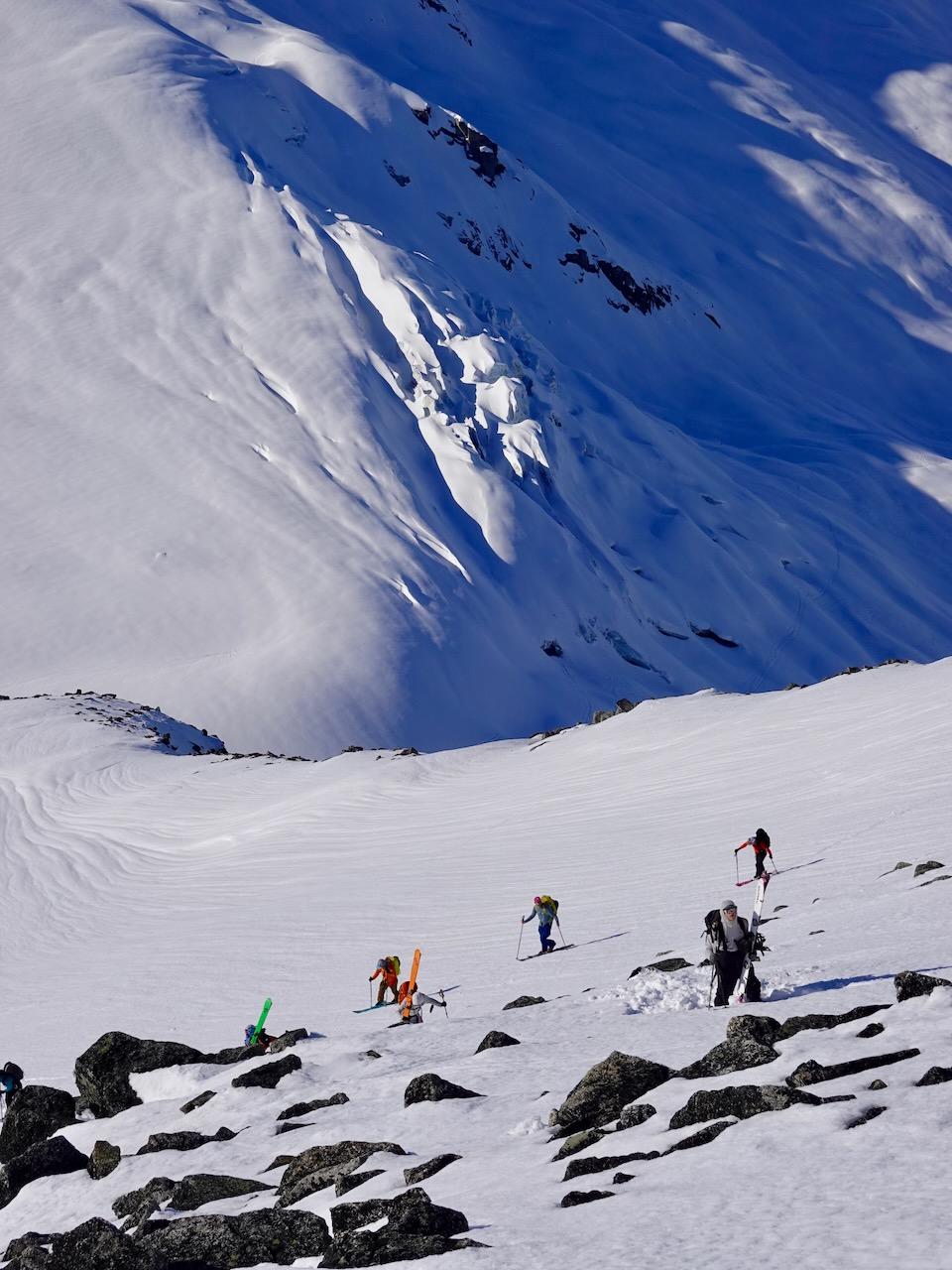February 3rd rain crust:
We have been slowly gaining confidence in the facets overlying the Feb 3rd rain crust this week in the Battle Range (Southern Selkirk Mountains). While traveling between 1400m-2760m on all aspects, we have not observed any whumphing, remote or skier triggered avalanches this week. The only avalanche observed on this layer this week was a size 3 up to 200cm deep in extreme south west facing terrain triggered by intense solar radiation and warming temperatures. With a good refreeze on steep solar slopes and BTL we have felt comfortable skiing large slopes with convexities over 35 degrees due to bridging, but not when the crust starts to break down with warming. We have been more cautious on northerly slopes at higher elevations that have not gone through a melt freeze cycle, as the buried rain crust exists up to around mountain top. However, the Feb 3rd layer is normally buried at least 150cm deep in the alpine and test results have been showing a low likelihood of triggering it with skis. We are most concerned about this layer in shallow areas of the alpine (ie. where the crust is only buried 70-80cm), where the facets overlying the crust have still been reactive to testing with sudden collapse fracture character. We are still concerned about triggering this layer in large steep northerly ALP slopes holding tension due to large convexities, or shallow areas where the facets may be more prominent. We have therefore been avoiding these areas as the problem does not seem to be healing very fast. This is supported by reports of remote, accidental and explosive triggered avalanches on the February 3rd layer elsewhere in the Columbia Mountains, which although the activity has been tapering off, it does not appear to have disappeared.
We have still been finding great dry powder on northerly aspects in the alpine, and excellent corn on southerly aspects with good re-freezes the past couple of days.
Hope you have a great spring.
Alex Geary and Madeleine Martin-Preney

